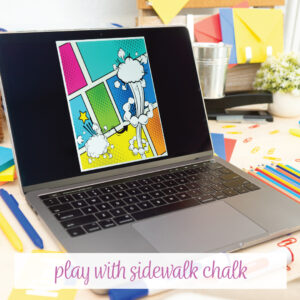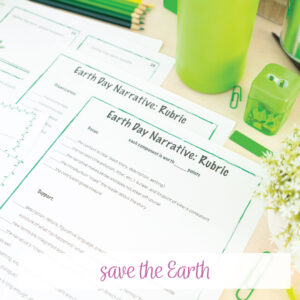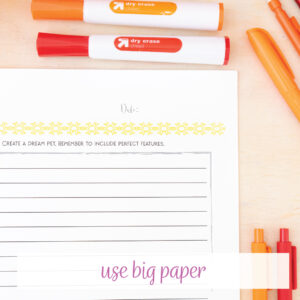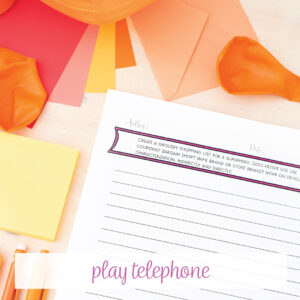Outdoor writing activities needn’t be a huge hassle! Read for more ideas about writing outdoors to help students.
I write with my personal children. They never fail to tell me I am “teachering” them, a word that I’m pretty sure means I’ve crossed over from parent to teacher. I just invent little activities that sure, might be teacher-ish. Sometimes, my lives blend together. Can I do that purposefully? Can I move some of the lighter activities from my home life into the classroom? Writing outdoors to help students sounds do-able.
Today, I’m thinking through blogging, thinking about writing. I have two sides, as many of you do: parent and teacher. What can I use from the classroom with my own children, and what can I use from my children in my classroom? Since I teach my own children outside during the summer, can I use some of these outside at school? As a creative writing teacher, I see opportunities to implement small writing activities everywhere! I feel that when children see writing as achievable, as something they can complete successfully, they gain the confidence to tackle larger projects.
Creative writing calls for experimentation, for mess. Writing outside provides the freedom students often crave.
These writing activities work at home (with a bit of relaxation) and at school (with a bit more structure). I’ve actually used these “lessons” in my classroom and in my front yard. These outdoor writing activities are not for everyone, but hopefully with a few adjustments, you have so new ideas to add to your writing lessons. Head outside, and try these writing activities for a bit of spark.
Use nature to tell a story.
The elements can be inspirational for students. Here are a few ways to ask students to tap into nature to develop their writing:
- Practice personification. Write a few sentences giving a tree feelings: how does the tree feel out in the sun all day? does the tree enjoy seeing different types of birds sitting on its branches? how does the tree feel when it snows?
- Younger kids can trace leaves or assemble pieces of nature together. They are still telling a story, in an age appropriate way. Bring students back into the room with their contents, and write a group story together.
- Assign different poetical devices to groups and see what students develop. (You can download a free poetry brainstorming sheet, too.)
- Build a memorable character. After developing a new character, analyze how that character would react to nature. Would your character rest under a tree, or would the character shun dirt?
You can also take any writing activity outside. The change of scenery can be inspirational for young writers.
Play with sidewalk chalk!
The ideas are endless! With kiddos learning letters, they can trace or practice identification. Older kids can practice spelling.
With my students, we have outlined ideas and reviewed grammar concepts. Brainstorm for a writing prompt with chalk and take pictures of the results. You can also divide the sidewalk and have each division be a portion of a cartoon or comic strip. Then, students would develop the story based on what their neighbor is building.
For some reason, sidewalk chalk makes regular work feel like un-work.
Save the Earth.
If you are writing about Earth Day, you very easily can move your writing lessons outside. In my Earth Day Lesson, students look at pictures of pollution from different states. You can easily use pollution or litter from your own area! Students will write from the perspective of pollution or litter, telling a story of how long it will take to decompose. (Research is included, too.)
After students learn about the devastation of not caring for our planet, they could take action. Arrange for students to clean the school, a local park, or part of the community.
Inspire with big pieces of paper.
Outdoor language arts activities can include big paper fun! I have purchased huge rolls of paper from party stores, and I have also bought larger pads of construction paper. For some reason, the huge pieces of paper inspire lots of writing.
They definitely encourage participation. Each child can write one sentence, and I can add new ideas or ways to transition to a new thought. Another method is to write a prompt on several pieces of paper and lay them down. Students can rotate and add ideas with markers so that you have a group story.
At school, use big pieces of paper for brainstorming or review. Hang the paper in your classroom and take students on a gallery walk.
Learn about each other.
In my spare time, I love to scrapbook. The books tell a story (narratives!), but they also require images. You can practice dialogue rules, verb tenses, and more with a “favorites” narrative. Essentially, students write about their favorite parts of themselves or their favorite hobbies, activities, or sports. You get to know your students, and they
Even if students do not create most of the scrapbook outside, have students sign their narratives (like authors!) in an outdoor setting. You can also have students sit outside and read pieces aloud as a closing activity.
Play telephone.
This is a bit like writing a story in a circle, only with the telephone element tossed in. You can make this a writing or public speaking lesson.
Ask person #1 (you may need to rotate) to say a silly sentence to person #2. After the message gets to the end of the line, kids should write down the final interpretation of the sentence. Dependent on their ages, ask them to write a few more sentences that elaborate on that first one. Younger kids may find that writing nonsense is fun!
Another option is for you to write the sentence and add their verbal responses. Create the story with their ideas, while modeling writing. For additional practice, implement dialogue rules with the messages.
Of course, you will need to modify these writing activities for ages and goals.
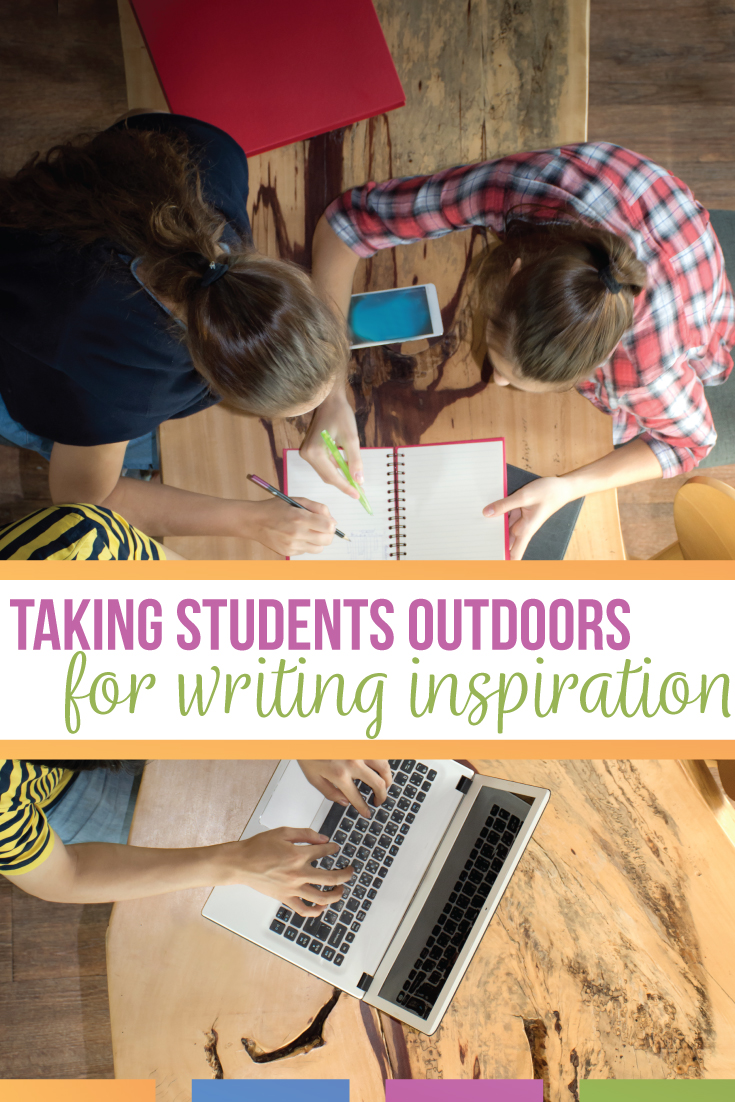
I see relaxed writing activities as such a valuable opportunity for kids to think in unusual, personalized ways. These outdoor writing activities will work at home or in the classroom.
Are you looking for more creative writing encouragement for secondary writers? In this post, I provide links to ten articles about famous writers’ writing processes.



